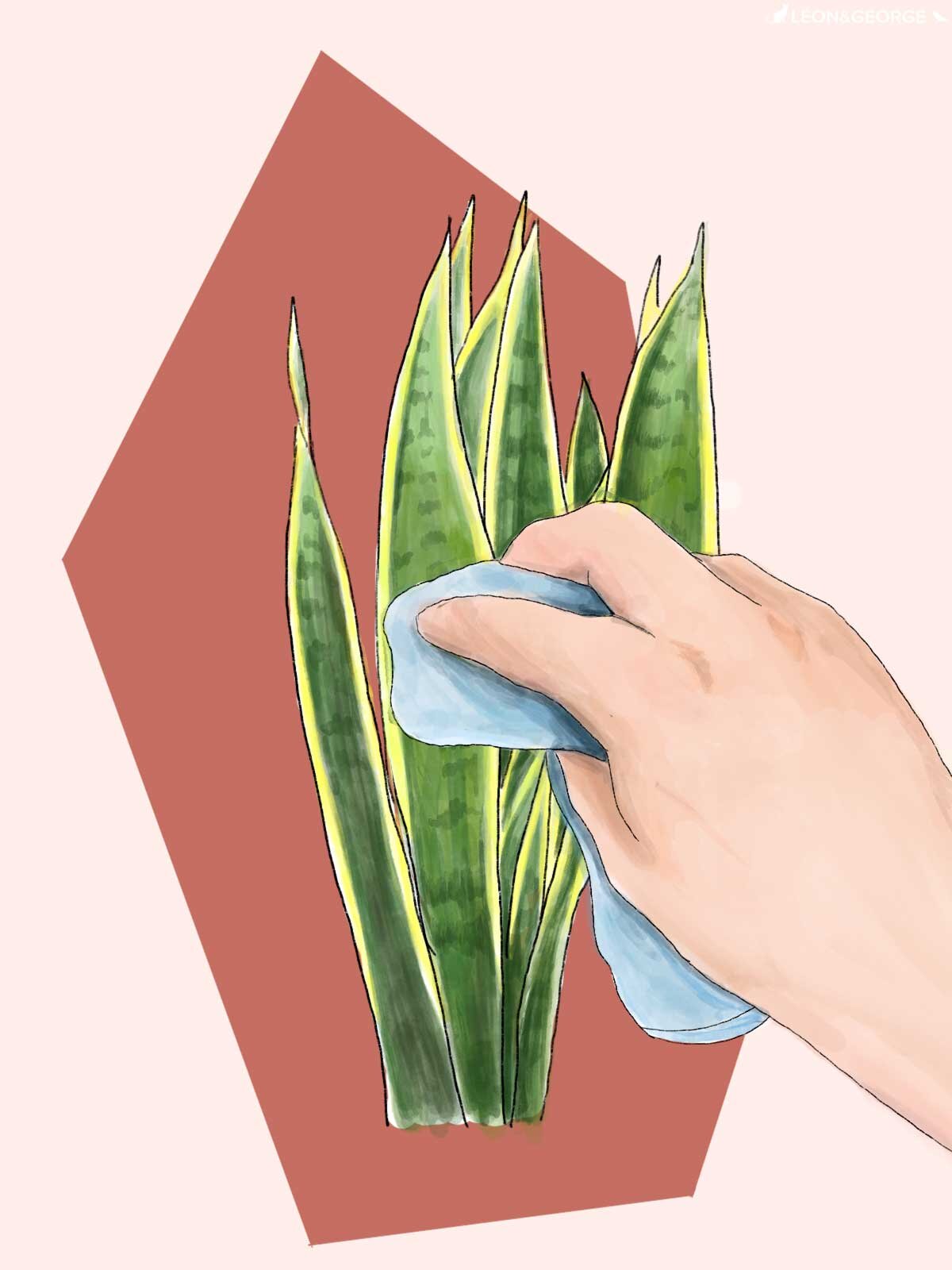How to Care For and Grow Your Snake Plant
Snake Plant
AKA sansevieria laurentii
There are dozens of different varieties of Snake Plants (also known as sansevieria or Mother-in-law’s Tongue), but none quite as stunning (and air-purifying!) as the Laurentii. Robust and structural, this incredibly hardy indoor plant is the perfect choice for someone looking for a low-maintenance yet stylish addition to their home or office. Learn all about the many Snake Plant benefits and how to care for and grow this beautiful indoor plant.
How much light does a Snake Plant need?
Snake Plants are not picky when it comes to light requirements. Like most indoor plants, bright indirect light is ideal though they also do well in low light as well as direct sun. They are one of the most highly adaptable plants when it comes to light!
How often should you water your Snake Plant?
Snake Plants do not need a lot of water, and it’s always best to err on the side of underwatering with this plant. In fact, the sanseveria is incredible drought resistant and can go long periods without a single drop of water.. Water once every ten days to two weeks, or whenever the top soil is completely dry. Avoid overwatering, and be careful not to wet your snake plant’s leaves, a watering can with a long spout can help you water precisely.
Snake Plant growth rate
The Snake Plant can grow up to four or five feet tall, though they are generally pretty slow growers. Fertilize 1-2 times per month in the spring and summer.
Common problems with Snake Plants
How to maintain a beautiful and healthy Snake Plant
Take care of your Snake Plant and it will take care of you — literally! The Snake Plant boasts many benefits, including releasing oxygen and purifying our air. The Sansevieria Laurentii variety is one of the best air-purifying houseplants according to Nasa, and it is excellent in filtering out toxins like formaldehyde and xylene. It also makes a wonderful bedroom plant, as it converts carbon dioxide into oxygen at night. Below are simple tips to continue caring for and enjoying the many benefits of your Snake Plant over time.
Pruning
Whether your Snake Plant is overgrown or it has some damaged leaves you’d like to remove, pruning a Snake Plant is very easy. Using a sharp, clean blade, simply cut off the stalks you’d like to remove at the base, closest as possibly to the soil. If the leaf drooping, dry, or otherwise on its way out, you may also try tugging the leaf and pulling it out from the root. It will come out easily if it’s time to go!
Cleaning
Take each leaf between two soft tissue cloths and wipe off the top to reveal a healthy shine (also helps the plant soak in more light!).
How to repot your Snake Plant
Houseplants grow much slower than they would in the wild. Depending on the size of your plant and the density of the roots, this is nice to do every 2-3 years to provide fresh nutrients and encourage new growth.
When to repot - Snake Plants have extremely strong roots and will begin to literally bust out of its pot when it’s time to repot.
Pot sizing - if you want your plant to grow taller, find a nursery pot that’s 2” in diameter larger than the current pot. If you want your plant to stay the same height, you can reuse the same pot and simply change the soil. If the latter is the case, you may need to separate some of the stalks of your Snake Plant, as they most likely will no longer all fit in the pot.
Get your hands dirty - spread out newspaper on the floor, remove the plant from the pot and shake off as much of the old soil as possible so that you have clean roots. Place the plant in the center of the pot, add new soil and pat down firmly. Water the soil thoroughly and place the plant in an area with bright indirect light. Your plant will take 2-4 weeks to settle from the shock and adjust to its new home.
How to propagate a Snake Plant
Looking to propagate your Snake Plant? They are relatively easy to propagate through a few different methods such as water propagation or division. Follow these instructions or visit our full guide on three different ways to propagate the Snake Plant:
Cut off a leaf - To propagate simply by cutting off a leaf, simply cut the leaf at the base near the soil with a sharp clean blade, and place the leaf in water. After a week or two, you should see roots begin to sprout. Wait until the roots are at least an inch long before placing the leaf in soil. Keep the cutting just moist to the touch and in bright indirect light for a few weeks or until it has rooted (if you tug on it, it feels firmly rooted).
Divide roots - You can also propagate Snake Plants through division. Start by removing your plant from it’s pot and gently separating the roots and leaves into different clusters.
Repot the clusters - Take each cluster or leaf and place in a small pot with fresh soil.
Keep hydrated - Keep your new baby Snake Plants well-hydrated during the first few weeks or until they have taken root in their new pots.
Illustrations by our talented plant stylist, Kailie Barnes.
Indoor plants, potted & delivered.
Premium plants paired with stylish ceramics, plus lifetime plant care support. Shop online at leonandgeorge.com.






